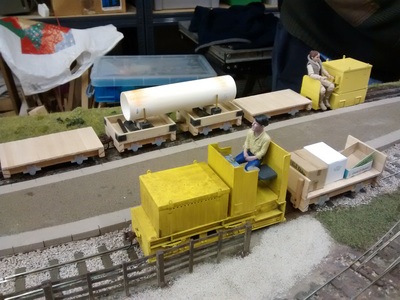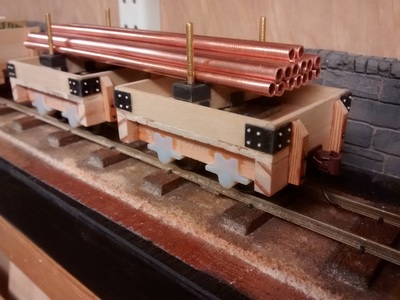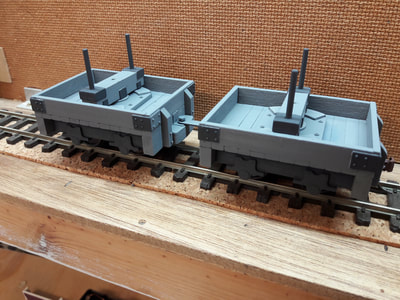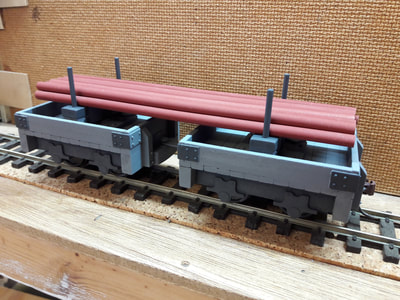Bolster Wagons
|
Looking for another type of wagon to model, I decided on a pair of bolsters. Using Google images, I found a mixture of prototypes and models, the latter comprising both prototypical and freelance. There were a few models that seemed very impractical, but I settled on a simplified W&L layout with two simple, single plank wagons with the swivelling bolster unit set on the floor. However, for flexibility, I decided to make the bolsters removable. This was mainly inspired by a selection of neodynium magnets I had purchased for the uncouplers. A magnet glued underneath and a bolster base of steel - what could be simpler?
|
The same timbers were used as the original chassis design. 2mm thick planks were added. The steel base, cut from a 25mm wide strip, was filed to shape and plasticard detail superglued in place. 8mm square bolsters had brass posts and plasticard detail added. For plasticard to timber, I like to use plastic cement liberally applied to both surfaces. Too much can distort the surface, but it sticks well and the plasticard pieces bond to each other nicely, ready for filing. The buffers had 10BA nuts glued into their underside to allow bolts to be fitted for the tie bar. The tie is replaceable so longer loads can easily be accommodated. Some Grandtline bolt details were also applied.
|
Axlebox update - The axleboxes here are from a second batch of 48, 3D printed by CRW. They are a different plastic, which is now their standard material. It's opaque light grey, a little cheaper and, maybe not quite so smooth, but still good. As a trial, another batch of 12 were ordered from Shapeways, the famous online printers in Holland. The service was excellent, but their cheapest plastic (unpolished) had a powdery finish and one or two of the units were slightly misshapen. They worked out to be almost 3 times the CRW price. 8 were used in the bogie wagon.













